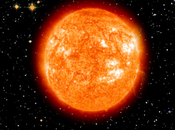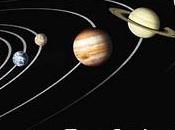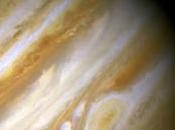Gabe12logan
MY BLOGS
-
Earth and Universe
http://universe-earth.blogspot.com/
information about earth and universe
LATEST ARTICLES ( 55 )
-
Solar Prominence

Solar prominence are purple jets of heated matter that during the full eclipse can be observed by the edge of the Sun. Prominence are of the different shapes,... Read more
Posted on 09 June 2011 ASTRONOMY, SCIENCE -
Dwarf Planet Eris
Eris, 136 199 Eris, is the largest known dwarf planet and for now the largest body found in Kuiper Belt. Although his discoverers initially declared him as the... Read more
Posted on 08 June 2011 ASTRONOMY, SCIENCE -
Weightlessness
is a consequence of the equality of centripetal and centrifugal forces. During the levitation bodies lose its weight, but not the mass and inertia. Read more
Posted on 06 June 2011 ASTRONOMY, SCIENCE -
What Is Solstice
? Solstice is the moment at which the Sun, in the apparent motion around the Earth, reached the highest positive or negative slope, and then a day in which it... Read more
Posted on 05 June 2011 ASTRONOMY, SCIENCE -
What Is Equinox
Equinox is the phenomena in astronomy when the Earth's axis is perpendicular to the plane in which the Earth moves around the sun, and in the broader sense,... Read more
Posted on 03 June 2011 ASTRONOMY, SCIENCE -
Extremophiles

Forty years ago researchers at the University of Wisconsin, led by Professor Thomas D. Brok, in the hot springs of national park Yellowstone discovered... Read more
Posted on 02 June 2011 ASTRONOMY, SCIENCE -
Adrastea and Metis
Adrastea is the Jupiter's second closest known satellite. Orbiting Jupiter at a distance of 129 000 km and go around it in just 7 hours and 9 minutes. Read more
Posted on 01 June 2011 ASTRONOMY, SCIENCE -
Interesting Facts About the Solar System

The Solar System consists of the Sun (a star of medium size within the Milky Way galaxy) and the bodies orbiting around it: 8 major planets, at least 171... Read more
Posted on 31 May 2011 ASTRONOMY, SCIENCE -
Jupiters Atmosphere
Jupiter's atmosphere is high about 1000 km, and it is mostly made up of hydrogen (75.5%) and helium (23.8%), and from compounds such as methane, ammonia, water... Read more
Posted on 28 May 2011 ASTRONOMY, SCIENCE -
Jupiter's Great Red Spot

Jupiter's Great Red Spot is the most interesting phenomena associated with Jupiter's atmosphere. The shape of this area is elliptical and is in Jupiter's... Read more
Posted on 27 May 2011 ASTRONOMY, SCIENCE -
Radio Galaxies
are galaxies that are extremely bright in the radio part of the spectrum. In the majority of detected radio galaxies a strong emission of radio waves was found... Read more
Posted on 25 May 2011 ASTRONOMY, SCIENCE -
Local Group Of Galaxies
The local group is relatively small cluster of galaxies and our galaxy is a part of local group. It consists of two dozen galaxies, but most are "dwarf"... Read more
Posted on 23 May 2011 ASTRONOMY, SCIENCE -
Dark Energy
In recent years, accumulating evidence supports the fact that besides dark matter, the universe is rich with dark energy. It primarily shows measurements of... Read more
Posted on 19 May 2011 ASTRONOMY, SCIENCE -
Hubble's Law
If we look deep into space we will notice that the distant galaxies are moving away from us. In fact, the distance between large groups gradually increased and... Read more
Posted on 18 May 2011 ASTRONOMY, SCIENCE -
Redshift
is the lengthening of light waves coming from sources that are moving away from us. If the source is approaching us, came to the opposite effect, blueshift. Read more
Posted on 17 May 2011 ASTRONOMY, SCIENCE -
Olbers Paradox

Why is the sky black at night? If the Sun was on two times farther away than it is, then we would receive a quarter of the quantity of photons that we now... Read more
Posted on 14 May 2011 ASTRONOMY, SCIENCE -
Nebular Hypothesis
Kant-Laplace hypothesis or nebular hypothesis is the hypothesis of the origin of the solar system from the primary nebula (nebula). Nebula, according to... Read more
Posted on 12 May 2011 ASTRONOMY, SCIENCE -
Hawking Radiation
is a process in which a black hole emits photons, and other, mostly light, particles. In this process the black hole loses its energy ie mass, and so can in... Read more
Posted on 11 May 2011 ASTRONOMY, SCIENCE -
Chandrasekhar Limit
is the limit mass of degenerate star that will confine itself to its further evolution. Chandrasekhar limit is 1.4 solar masses. Read more
Posted on 10 May 2011 ASTRONOMY, SCIENCE -
Dwarf Galaxies
In the immediate neighborhood of our Galaxy system a few more small satellite galaxies was found, the so-called elliptical spheroids that can be considered as... Read more
Posted on 09 May 2011 ASTRONOMY, SCIENCE
